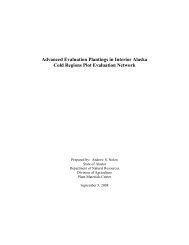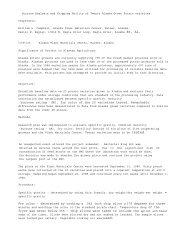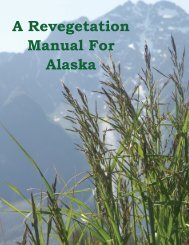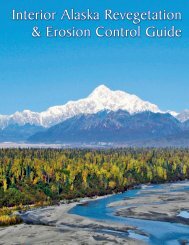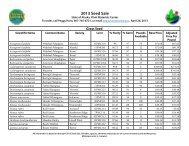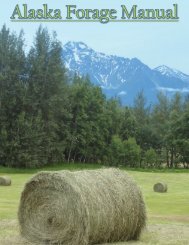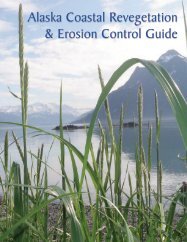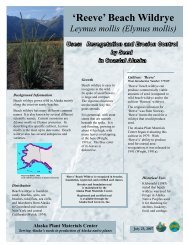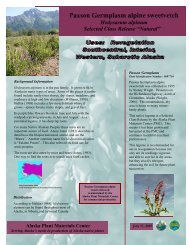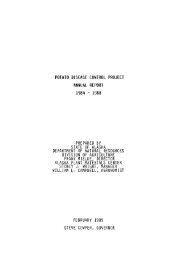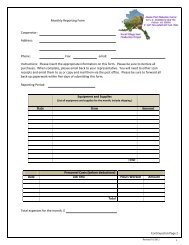download (5 mb) - Alaska Plant Materials Center - State of Alaska
download (5 mb) - Alaska Plant Materials Center - State of Alaska
download (5 mb) - Alaska Plant Materials Center - State of Alaska
You also want an ePaper? Increase the reach of your titles
YUMPU automatically turns print PDFs into web optimized ePapers that Google loves.
Impacts<br />
Impacts to Interior <strong>Alaska</strong> have many causes. The region supports industries<br />
including mining, logging, tourism, and oil and gas production. Production<br />
industries, such as mining, can have significant impacts on the environment, and<br />
these effects must be mitigated. Mining, road-building, and tourism all take a<br />
toll on the natural environment. Human-caused impacts such as these have<br />
disrupted natural ecosystems and resulted in significant changes. Proper stewardship<br />
dictates that these human-caused impacts to Interior <strong>Alaska</strong>’s ecosystem<br />
be minimized.<br />
Purpose<br />
This guide was developed to aid in the process <strong>of</strong> revegetation. The intended<br />
audience is private property owners, local and government agencies,<br />
environmental engineers, resource extraction companies, and anyone else that<br />
may encounter a need for erosion control or revegetation.<br />
For the purpose <strong>of</strong> this document, revegetation is defined as:<br />
The re-establishment <strong>of</strong> plant cover by means <strong>of</strong> seeding or transplanting<br />
on a site disturbed by natural or man-caused actions.<br />
Impacts, both large and small, will continue to disrupt interior <strong>Alaska</strong>. Recovery<br />
(defined as the presence <strong>of</strong> self-sustaining vegetative cover and limited<br />
erosion) <strong>of</strong> most sites can be expedited and impacts minimized with human intervention<br />
to correct limitations and guide the ecosystem towards a desired end<br />
state. Material presented in the manual focuses on the “s<strong>of</strong>t approach” to erosion<br />
control, using vegetation as opposed to the “hard approach” which utilizes engineered<br />
structures.<br />
Numerous methods for reintroducing vegetation on a site are available.<br />
This manual details a logical sequence <strong>of</strong> surface preparation, fertilization, and<br />
seeding. When followed on a project site, this sequence will usually result in a<br />
self-sustaining native plant community that requires minimal management input.<br />
When conditions allow, most disturbed sites will naturally be re-colonized<br />
with plants from the surrounding area, though it may take several years before a<br />
plant community becomes established. Natural reinvasion, as this technique is<br />
known, is at times used in Interior <strong>Alaska</strong>. This approach tends to be more acceptable<br />
in areas that are not highly visible and do not have immediate erosion<br />
control needs or regulatory time lines.<br />
The latter portion <strong>of</strong> this manual is dedicated to case studies, highlighting<br />
past revegetation projects that have occurred throughout Interior <strong>Alaska</strong>. These<br />
projects expose the realities <strong>of</strong> revegetation in the field, including successes,<br />
challenges, and lessons learned. It is our hope that these case studies will become<br />
a useful resource for future projects. These reports, as well as case studies<br />
from the <strong>Alaska</strong> Coastal Revegetation & Erosion Control Guide are available<br />
from the <strong>Alaska</strong> <strong>Plant</strong> <strong>Materials</strong> <strong>Center</strong>’s website, at plants.alaska.gov/reveg.<br />
4



